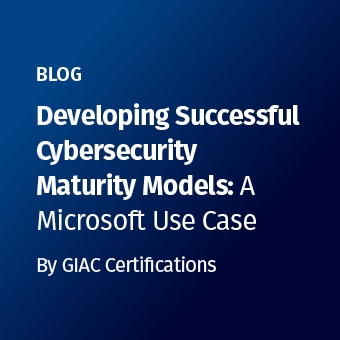Tags:
This blog summarizes key insights from the SANS strategy guide, Navigating the Path to a State of Zero Trust in 2024, providing a detailed overview of the challenges, strategies, and best practices for implementing Zero Trust in today's complex digital environment.
In 2024, the rise of Zero Trust security has reached a critical juncture. Adopting comprehensive Zero Trust architecture (ZTA) is becoming the recommended approach to align cyber defense measures with the evolving threat landscape. Zero Trust is not just a set of security tools but a foundational shift away from legacy security concepts focused on perimeter-based controls.
First conceptualized in 2009 by Forrester’s John Kindervag, Zero Trust has evolved into a prescribed way of being for organizations to maximize their security posture. It assumes some degree of compromise will occur, so no system, user, or asset should be implicitly trusted. This mindset helps limit the damage of breaches by reducing detection, response, and mitigation timelines and preventing lateral movement within the network.
However, achieving a true state of Zero Trust is not straightforward. Organizations often encounter challenges such as legacy systems, budget constraints, and internal resistance. The SANS strategy guide assesses these intricacies from both the CISO and practitioner perspectives, providing actionable insights for overcoming roadblocks to successfully implement Zero Trust at scale.
Assessing the Demand for Zero Trust in 2024
The rising demand for Zero Trust security is driven by heightened cyber risk, stemming from new digital transformations and evolving tactics used by sophisticated threat actors. While next-generation technologies like generative artificial intelligence (GenAI), quantum computing, and blockchain are gaining attention, the true drivers of increased security risk are the adoption of modern technologies like cloud systems, the rise in remote work, and increasingly digitized environments.
Additionally, shifting dynamics across the global cyber regulatory landscape have raised the stakes for organizations to implement agile security strategies like Zero Trust to support their corporate responsibility, data privacy, and compliance requirements. These factors have created an environment where security posture must take precedence in enterprise risk management.
Zero Trust architecture is critical for managing four key areas: cloud acceleration, supply chain threats, human risk, and corporate responsibility.
Cloud Acceleration
The rise of cloud-based enterprise models has exponentially expanded the attack surface. Post-pandemic work environments have dramatically increased attack vectors and vulnerabilities. Modern threat actors, equipped with advanced tools, can exploit these vulnerabilities more easily than ever. Zero Trust adoption enables organizations to construct defenses from the inside out through the principle of least privilege, forming a holistic security strategy that safeguards data and maintains business continuity.
Supply Chain Threats
There has been an increase in major software supply chain attacks in recent years. These attacks allow threat actors to infiltrate multiple organizations through a single compromise. Zero Trust frameworks are essential for defending against such threats, ensuring a business can detect and respond to breaches early while preventing attackers from accessing the entire supply chain if one system is compromised.
Human Risk
Employee error or negligence accounts for more than 80% of data breaches today, making human risk a pressing security concern. Hybrid work environments blur the line between personal and professional spaces, increasing the complexity of monitoring user activity and reducing the relevance of traditional network-based security. Zero Trust limits the damage a compromised user can cause by segmenting the security environment into smaller, isolated zones and constantly evaluating access requests.
Corporate Responsibility
Recent federal charges against security leaders have highlighted the thin margin for error amid heightened regulatory pressures. New cyber regulations mandate that CISOs engage the C-suite and Board to align cyber risk with business goals, protect the organization from legal liabilities, and ensure security is a cultural priority. Zero Trust principles support these efforts by improving incident response, strengthening data governance, reducing data exposure, and providing clear audit trails of user activity, driving responsible practices across the organization.
The CISO’s Role in Zero Trust: Bridging a Culture Gap
The modern CISO must serve as a transformational leader rather than a pure technologist. CISOs must align security with strategic, operational, financial, and reputational priorities to establish the right processes and identify the right people to implement the architecture. Generating collective stakeholder buy-in is crucial. CISOs must explain Zero Trust’s value in terms that simplify the intersection of cyber and business risk.
Designing an Effective Zero Trust Framework
After generating buy-in, the next step is designing a Zero Trust architecture aligned with the organization’s security environment. This involves changes to core system components across seven areas: user identity, devices, network and environment, applications and workloads, data, visibility and analytics, and automation and orchestration.
Ensuring successful implementation requires understanding the current security tools and infrastructure, critical data and systems, risk tolerance, regulatory commitments, and business goals. Conducting threat modeling and product security testing can help determine where Zero Trust principles would be most impactful.
Fostering Sustainable and Measurable Success
Effective change management policies are essential for a successful Zero Trust implementation. This includes clear communication, comprehensive training, phased implementation, user feedback mechanisms, and cross-functional collaboration.
Measuring success involves defining clear metrics tailored to the organization’s environment and needs, such as authentication success rates, policy compliance rates, and time to detect and respond to incidents. Emphasizing clear key performance indicators (KPIs) helps demystify measurability for both cybersecurity teams and business managers.
Putting the Right People in Place
Fostering sustainable success also requires the right team of security professionals who are committed to collaborating for Zero Trust adoption and possess the necessary skills. This involves assessing the existing team, identifying functional silos, and investing in targeted cyber upskilling and reskilling.
The Practitioner’s Role in Zero Trust: Becoming an All-Around Defender
Practitioners must commit to becoming all-around defenders by diversifying their expertise and embracing a growth-oriented mindset. Cybersecurity training programs provide essential tailored instruction for operationalizing Zero Trust principles. Developing a holistic understanding of the organization’s security environment and roles within it is critical. User awareness training programs can help foster a culture of cyber hygiene that aligns with Zero Trust principles.
The Path to Achieving Zero Trust
Achieving Zero Trust is a continuous journey, requiring tangible commitments to professional development from both CISOs and practitioners. Embracing a growth-oriented mindset will put organizations on the path to a true state of Zero Trust and stronger cyber resilience.
Embracing Zero Trust is not just a technological shift; it's a strategic imperative for organizations seeking to safeguard their assets in an increasingly hostile cyber landscape. For a more comprehensive guide and actionable insights, download the full SANS strategy guide, Navigating the Path to a State of Zero Trust in 2024 equip your organization with the knowledge to transform your security posture and stay ahead of evolving threats. Don’t miss out on this valuable resource: download your copy today and start your Zero Trust journey with confidence.



